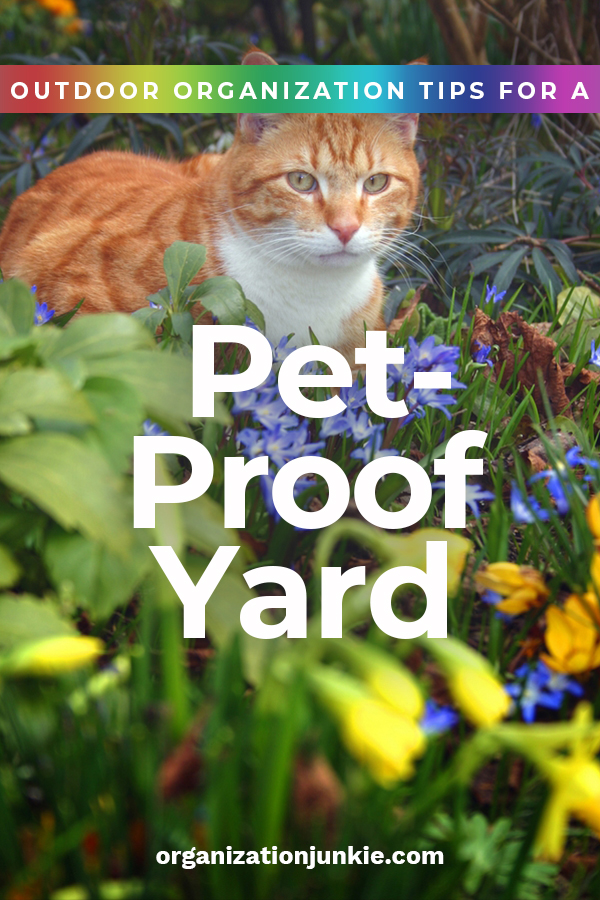
If you’re a pet owner, you should know the tips for a pet-proof yard. Just as a parent baby-proofs the house, pet owners should think about pet-proofing the house and the backyard. It’s easy to assume that if your yard is fenced, your job is done, but that’s really not the case. Learn better outdoor organization to keep your pet safe during his playtime outside.
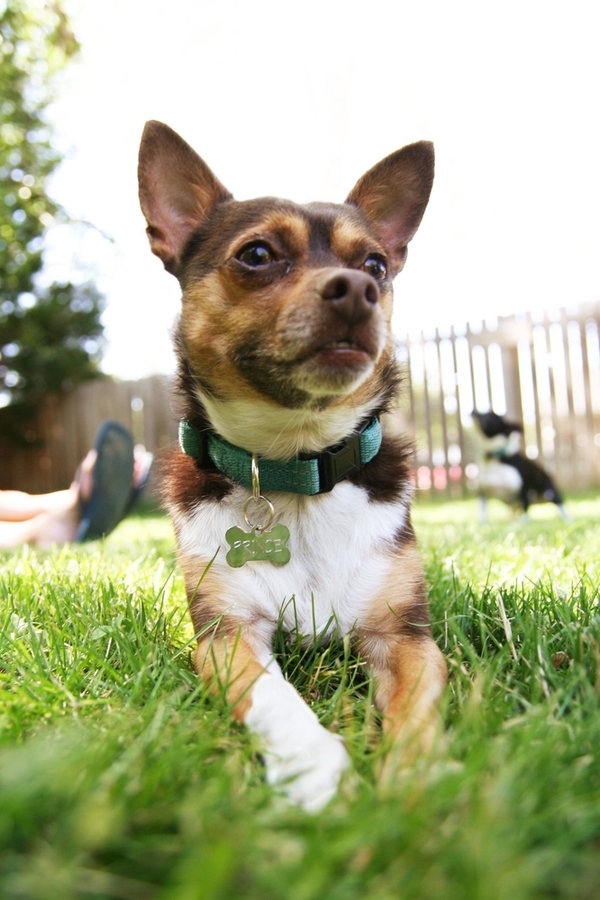
Tips for a pet-proof yard
- Fencing the yard, though it isn’t the only consideration, is one of the most important tips for a pet-proof yard. The reason is pretty obvious, since a fence helps keep your pet contained where you want him. But make sure the fence is in good repair, has no loose slats or links, and that your pet can’t dig underneath it.
- Be careful about lawn treatments during the warm months! Fertilizers, weed killers and pesticides can be dangerous for your pet. The safest way to handle it is to keep your pet indoors or in a safe, contained area in another part of the yard whenever chemicals are used outside. Keep your pet away until the chemicals have dried or otherwise dissipated.
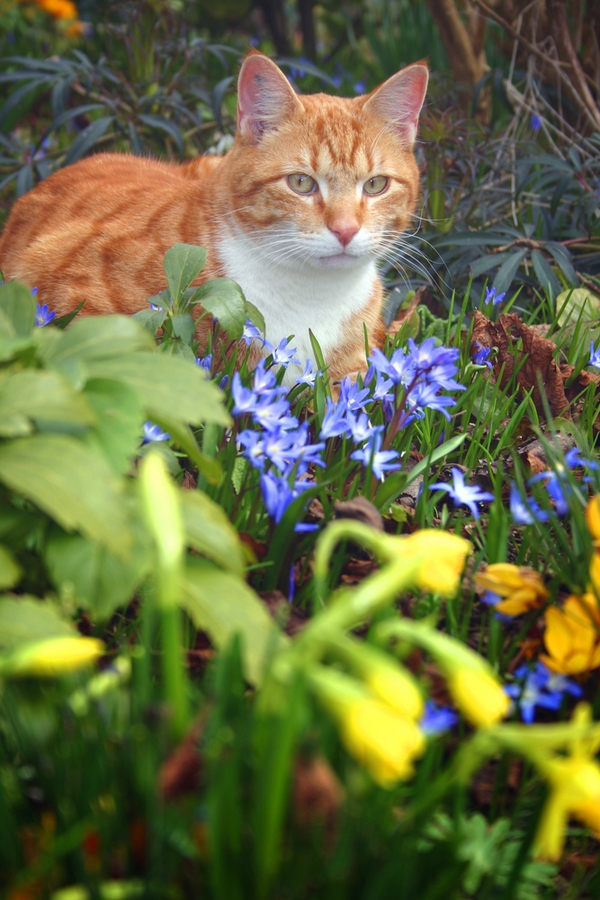
- Another of our tips to pet-proof your yard includes the types of plants you use outdoors. If you have a cat who likes to spend time outdoors in the yard, avoid planting lilies. This includes all varieties of day lilies, as well as Tiger lilies and Easter lilies. Lilies are very toxic to cats–even a very small amount of pollen from a lily can cause kidney failure in cats who ingest it.
- Before you plant anything new in your yard, whether a flower or a shrub, it’s best to do a little research and find out if the plants you are considering are toxic to animals.
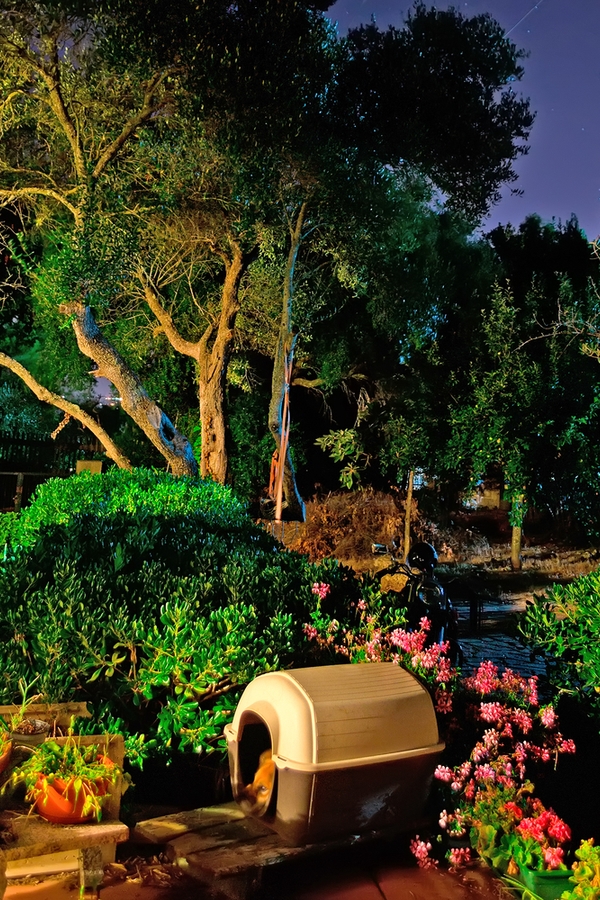
- Always provide a safe spot for your pet to hang out during his outdoor play time. This could be a dog house or just a cooler, shady area for his food and water. But everyone, including your pet, needs a spot out of the sun on a hot day. Pets are susceptible to heat stroke too!
- Watch out for bird feeders. Why? A frequented bird feeder also means bird poop. If you pet ingests it, it could cause salmonella in your pet.
- You should also watch out for any ponds or water features in your yard. A curious pet can get into trouble with those–so be sure it’s safe before leaving your pet unattended.
- When you clean your outdoor patio furniture and other equipment, keep your pet away if you use harmful chemicals.
- Don’t store any of those harmful chemicals where your pet could even accidentally get into them. A locked shed is a great outdoor organization tool for any pet owner.
Practice better outdoor organization with these tips for a pet-proof yard. Then rest a little easier knowing your best furry friend has a safe spot to play!
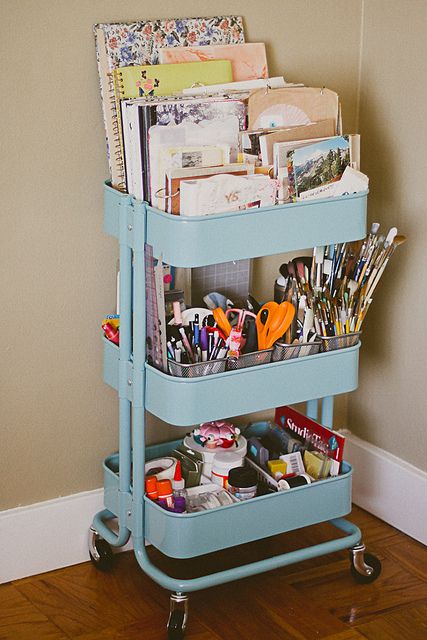


Leave a Reply